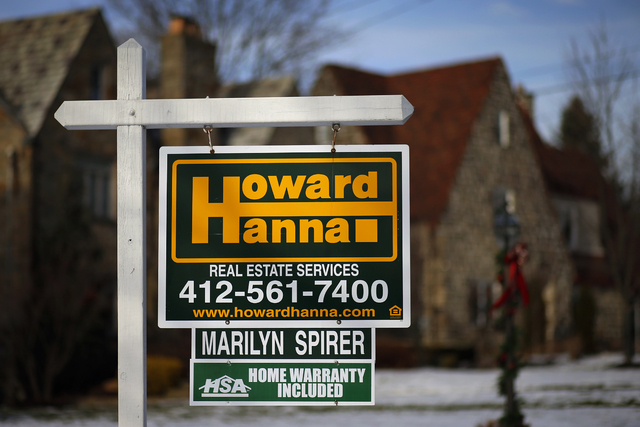U.S. home prices, led by gains of 22.2 percent in Nevada, rise in January

WASHINGTON — U.S. home prices, led by gains in Nevada, rose in January after three months of declines as a tight supply of properties likely supported prices despite slower sales.
The five states with the biggest price gains in January, compared with a year earlier, were Nevada, where prices rose 22.2 percent; California, 20.3 percent; Oregon, 14.3 percent; Michigan, 13.7 percent; and Georgia, 13.4 percent. Mississippi was the only state to report a price decline.
Real estate data provider CoreLogic said Tuesday that prices rose 0.9 percent in January after dipping 0.1 percent in December. Over the past 12 months, home prices have risen 12 percent, the biggest year-over-year gain in more than eight years.
Such outsize price gains might not continue much longer, however. Paul Diggle, an economist at Capital Economics, notes that January’s price gains reflect conditions several months ago, when buyers first made offers. The supply of available homes was smaller than it is now, and it helped lift prices. The sales were completed in January.
Since then, more homes have come on the market while sales have slowed. That trend has modestly boosted the supply of homes and “points to a slowdown in price gains later this year,” Diggle said.
Diggle, like most other economists, foresees year-over-year price gains of below 10 percent in the coming months.
CoreLogic’s price figures aren’t adjusted for seasonal patterns, such as winter weather, which can depress sales. Snowstorms and low temperatures contributed to a sharp drop in sales of existing homes in January. The National Association of Realtors said sales plunged to their lowest level in 18 months.
The harsh winter weather has discouraged many Americans from house-hunting. And the average rate on a 30-year mortgage is about a percentage point higher than it was last spring, which means buying costs have risen.
Those factors have weighed on the housing market. Economists think the housing recovery could pick up once the spring buying season begins, though likely at a slower pace than last year.
A measure of signed contracts was unchanged in February, a sign that sales won’t immediately recover from January’s sharp fall. Signed contracts usually lead to a finished sale in one to two months.
And builders broke ground on 16 percent fewer homes in January than in December, the government said last month. That was the second straight decline.
Other price gauges are falling. The Standard & Poor’s/Case-Shiller 20-city home price index dipped in December, the latest period for which data are available, and its year-over-year gain slowed.
Nationwide, home prices are still 17 percent lower than at the peak of the housing bubble in April 2006, according to CoreLogic. Prices have set highs in three states: Louisiana, Nebraska and Texas. They are within 10 percent of their peaks in 19 additional states.